Bologna, often referred to as “La Grassa” (the Fat) for its rich culinary tradition, is a paradise for food lovers. In this article we will walk you through the top must-try dishes and food of Bologna and recommend you the best restaurants in the city, where you can try all these culinary delights.
Bologna’s culinary history dates back to the medieval period. The city’s strategic location along trade routes contributed to the availability of a variety of ingredients. There are several factors that have influenced and shaped Bologna’s culinary traditions.
Geographical Location: Bologna is situated in the fertile Emilia-Romagna region, known as the “breadbasket of Italy.” The region’s rich soil and favorable climate contribute to the abundance of high-quality ingredients, including fresh produce, meats, and dairy products.
Historical Prosperity: The city has a history of economic prosperity, particularly during the medieval and Renaissance periods. The city’s wealth allowed for the development of a sophisticated culinary culture, attracting skilled chefs and fostering a culinary tradition based on quality and variety.
University Influence: The University of Bologna, founded in 1088, is one of the oldest universities in the world. The influx of students and scholars from diverse backgrounds has contributed to the city’s cosmopolitan atmosphere and influenced its culinary landscape. The university environment also created a demand for affordable and hearty meals, leading to the popularity of dishes like ragù and tagliatelle.
Medieval Guilds: Bologna had powerful medieval guilds, including the guild of the macellai (butchers) and the guild of the sfogline (pasta makers). These guilds played a crucial role in maintaining quality standards and preserving traditional recipes. At the same time, the Culinary Guilds were responsible for regulating the production and sale of specific food items. This system ensured the authenticity and quality of Bolognese products, such as mortadella and tortellini.
Bologna’s culinary history is a testament to the city’s passion for food and its commitment to preserving and evolving traditional recipes.
Let’s explore the top signature dishes and foods of Bologna.
1. Tagliatelle al Ragù
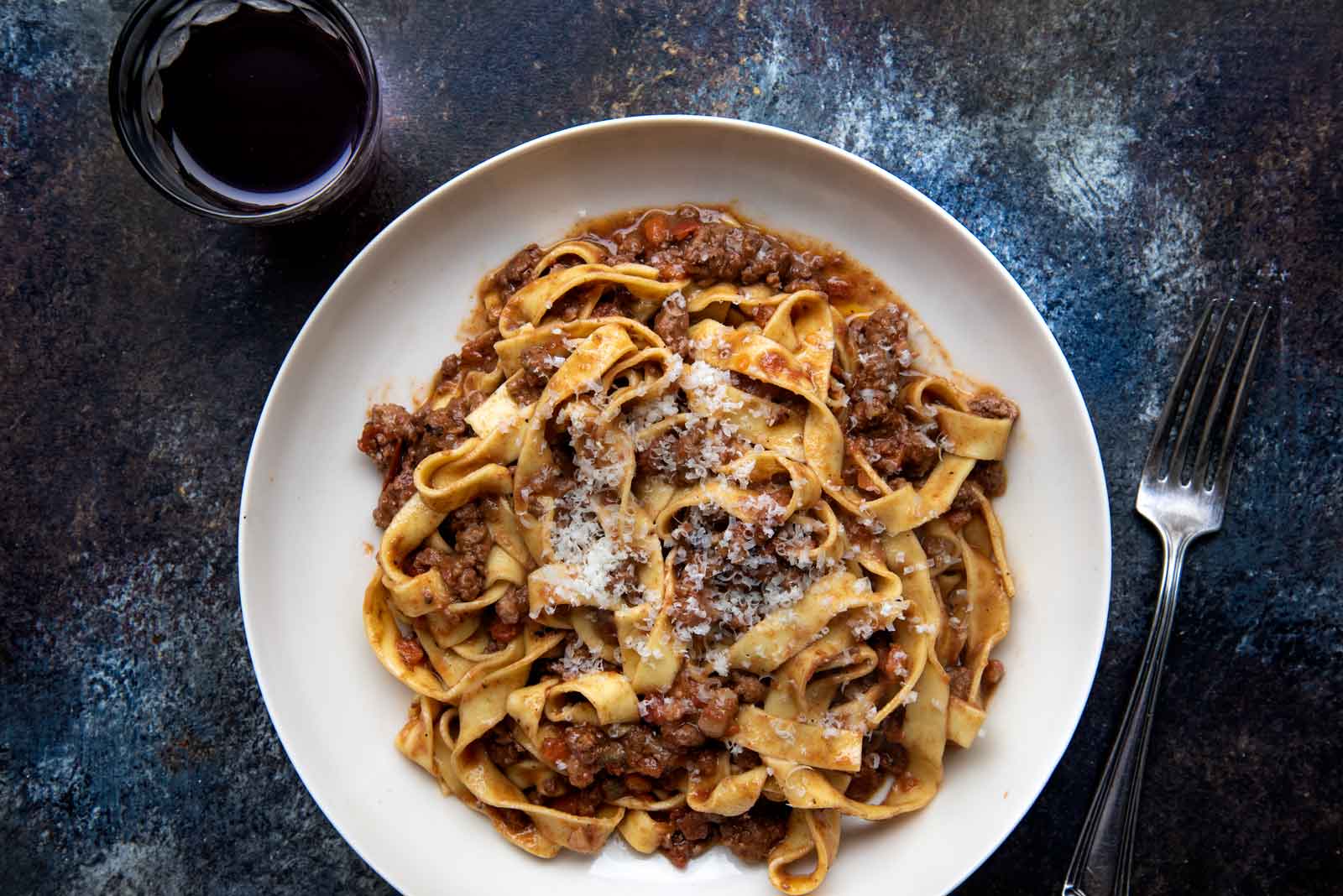
Ragù alla Bolognese, commonly known as Bolognese sauce, has roots dating back to the late 18th century. The sauce evolved from traditional Italian meat-based sauces, and the first recorded recipe appeared in the cookbook “La Cucina Teorico-Pratica” (Kitchen Theory and Practice) in 1891. Over time, it became one of the most famous pasta sauces worldwide.
The classic pasta pairing for Bolognese sauce is tagliatelle, a wide and flat hand-made pasta that holds the rich sauce well. It is believed that the dish’s creation is inspired by the colors of the Italian flag. The dish gained popularity in the mid-20th century.
Where to try best Tagliatelle al Ragu in Bologna:
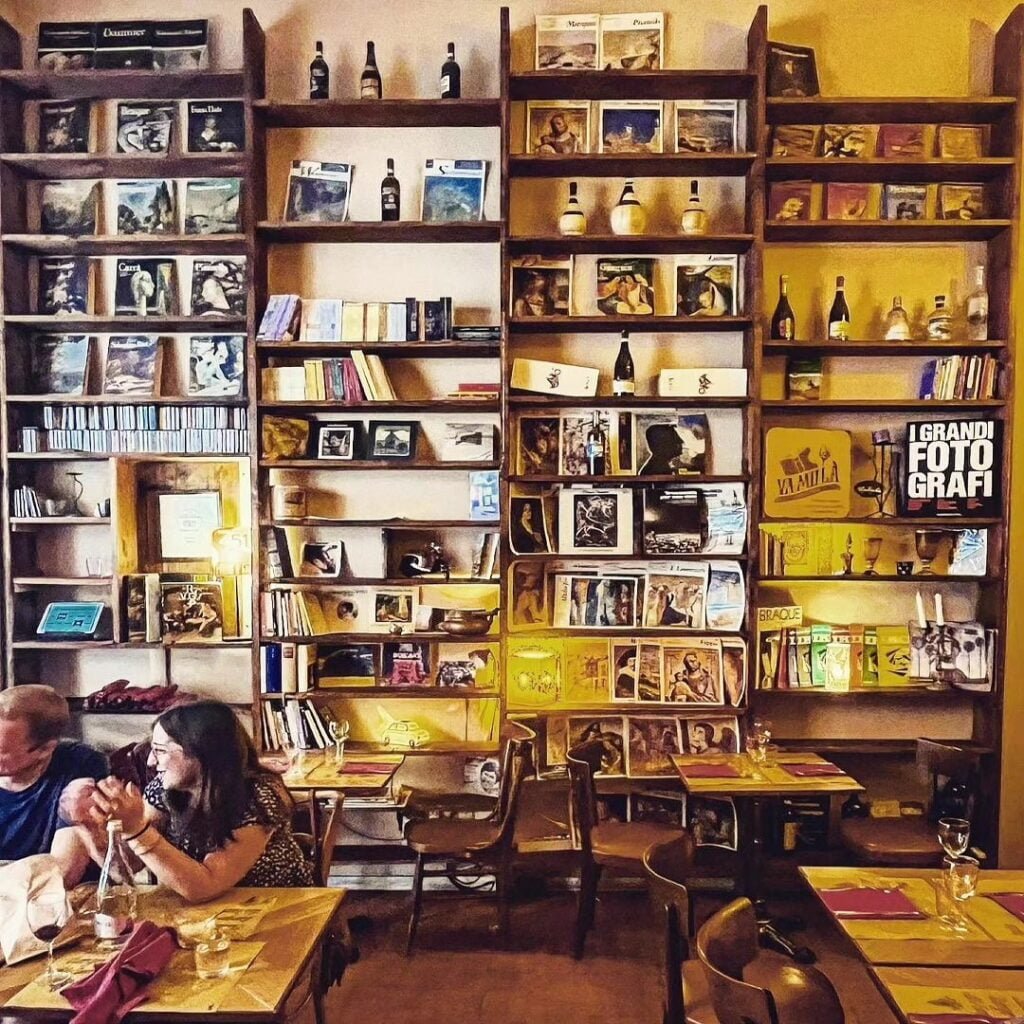
Va Mo Là is a retro trattoria specializing in traditional Bolognese cuisine. Located in Via delle Moline, at the beginning of the University District of Bologna, it offers more than just excellent tagliatelle; they are also known for their delicious lasagnas. The lasagnas come in two varieties: red, made with ragù alla Bolognese, and green, a vegetarian option. For a perfect pairing with tagliatelle, consider enjoying them with a local Sangiovese wine.
2. Tortellini
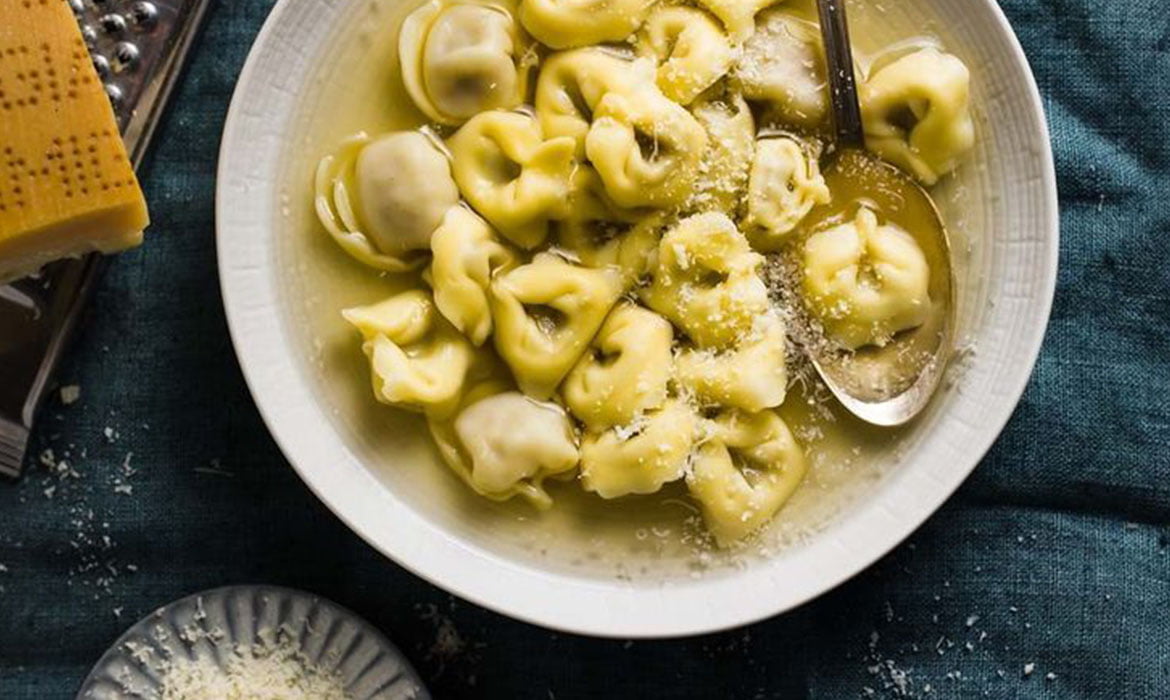
Tortellini, a staple of Bolognese cuisine, has been enjoyed for centuries. These small, ring-shaped pasta pieces are typically made with a filling of meat, such as pork or a mixture of meats, along with Parmesan cheese, nutmeg, and sometimes other ingredients. They are known for their distinctive shape, often said to resemble a navel or belly button. The legend surrounding the creation of tortellini links it to an innkeeper in Bologna who was inspired by the navel of Venus.
Tortellini are often enjoyed with a simple broth (Tortellini in Brodo) or cream. Tortellini in broth is a typical Christmas dish in Bolognese families.
3. Tortelloni
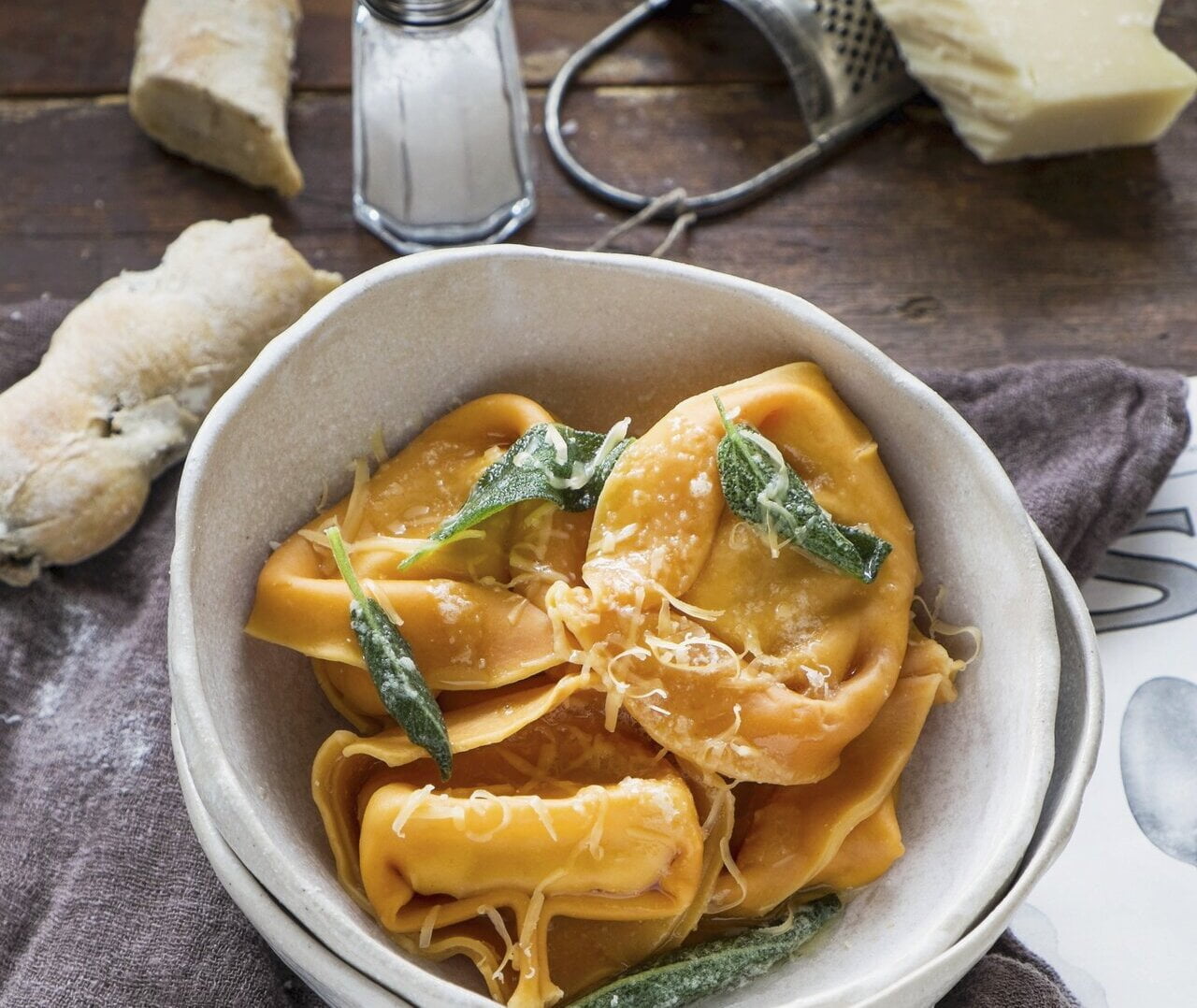
Tortelloni is a larger version of tortellini, another beloved pasta dish in Bolognese cuisine. While tortelloni share a similar shape with tortellini, they are larger and often served with different accompaniments.
The fillings for tortelloni can vary and may include ricotta and spinach, pumpkin, or other flavorful combinations. Like tortellini, tortelloni can be enjoyed with various sauces, such as butter and sage, cream, or a hearty meat ragù.
Where to try best Tortellini and Tortelloni in Bologna:

4. Lasagna Bolognese
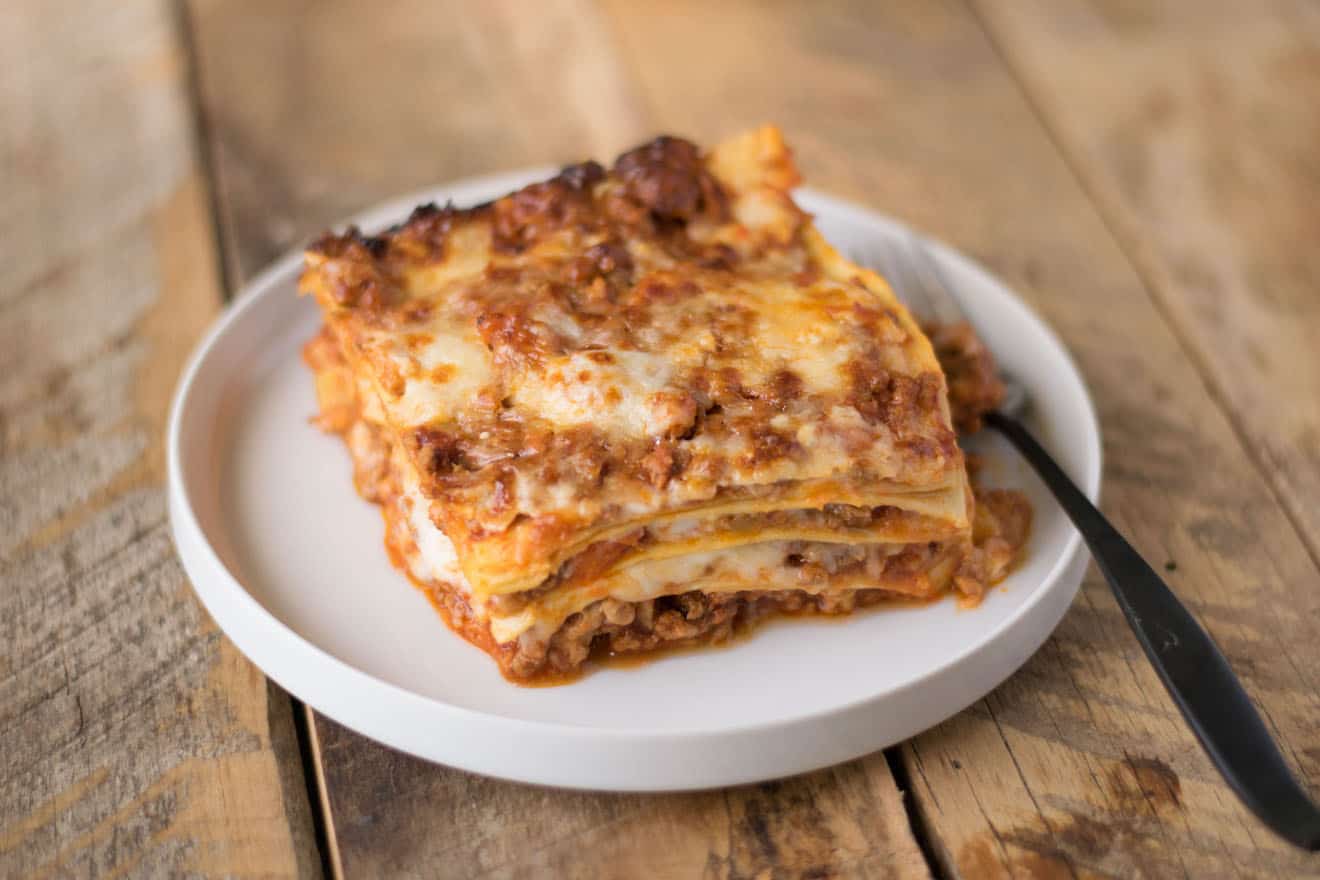
Lasagna, featuring layers of pasta, Bolognese sauce, béchamel, and Parmesan, is a dish with ancient origins. The layered pasta concept has been traced back to ancient Roman times. Lasagna Bolognese, specifically, evolved in Bologna and showcases the city’s culinary artistry.
There is also a variation of traditional Lasagna Bolognese, which is Green Lasagna. The green aspect usually comes from incorporating spinach into the pasta or using spinach lasagna sheets. Green Lasagna can be prepared with meaty Bolognese ragu or in a vegetarian version. The vegetarian version might vary with ingredients. However, one of the best variations in my taste is a mushroom version with béchamel sauce.
We will mention below where you can try the best lasagna in town along with Gramigna alla Salsiccia.
5. Gramigna alla Salsiccia

Gramigna alla Salsiccia (gramigna with sausage) is a classic Bolognese dish featuring a specific type of pasta served with a flavorful sausage-based sauce. The pasta is typically short, curled, and ridged, resembling small snail shells. The sauce is made with Italian sausage, tomatoes, wine, and various seasonings.
Where to try best Lasagna and Gramigna in Bologna:
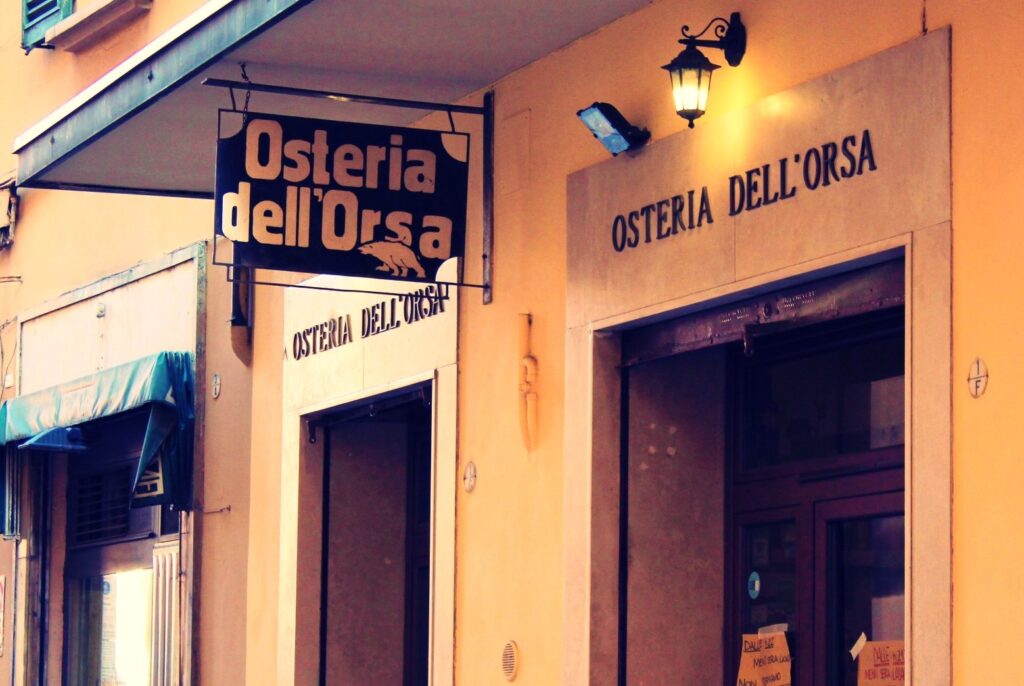
6. Cotoletta alla Bolognese
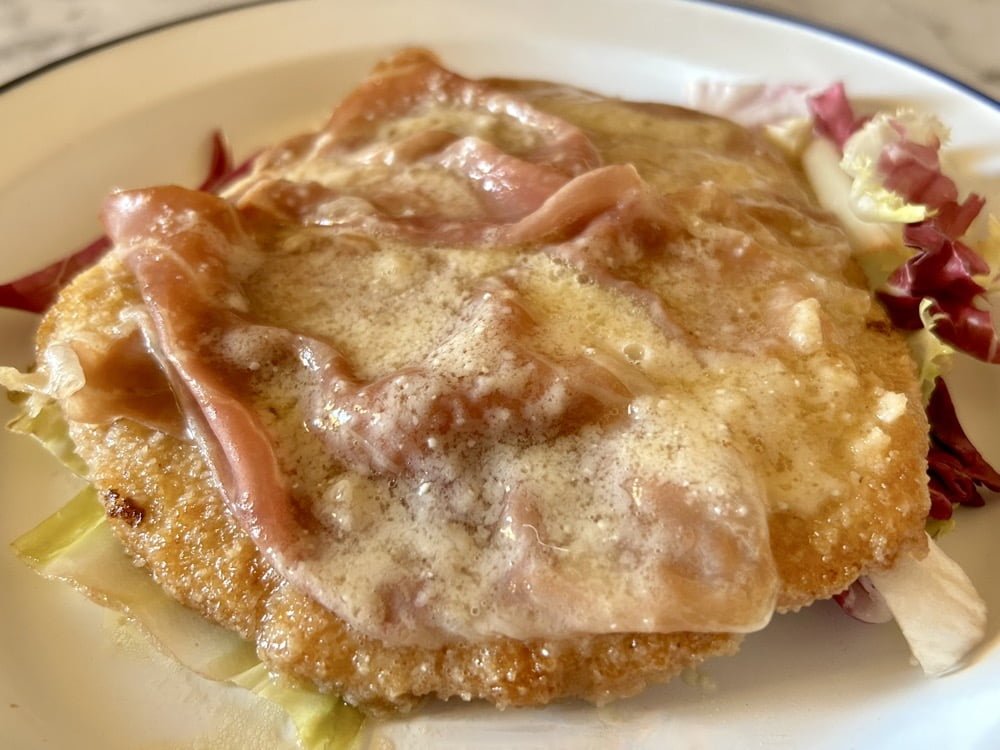
Cotoletta alla Bolognese, or Bolognese Cutlet, is a classic local dish. It features a breaded and fried veal cutlet seasoned with Parmesan cheese, garlic, and parsley, providing a burst of flavors. This delightful dish is often accompanied by a side of fresh greens or mashed potatoes.
Where to try best Cotoletta alla Bolognese in Bologna:
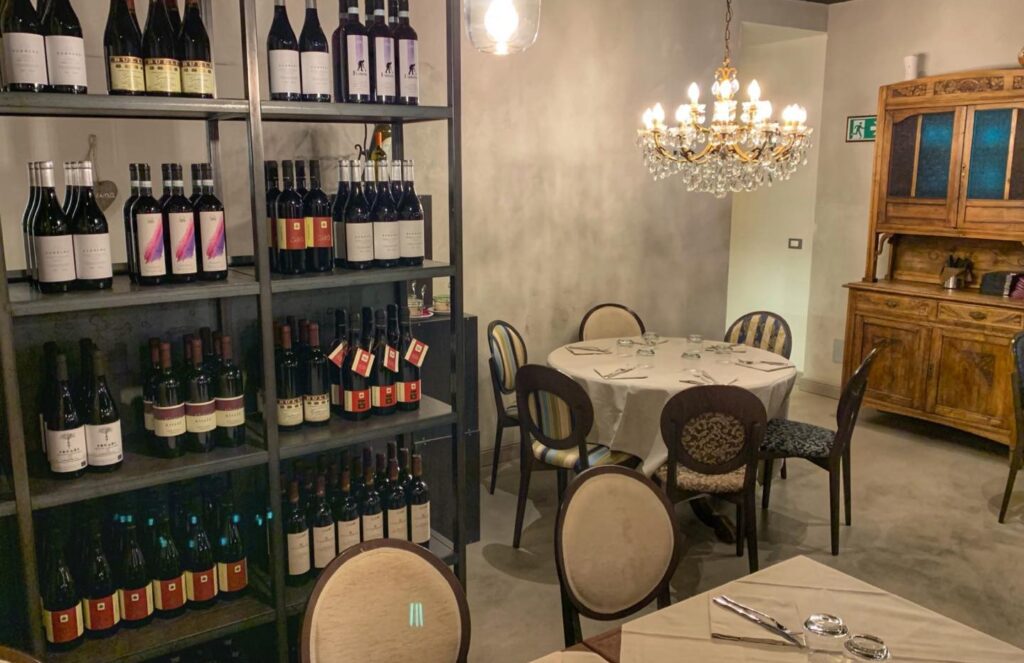
7. Crescentine or Gnocco Fritto
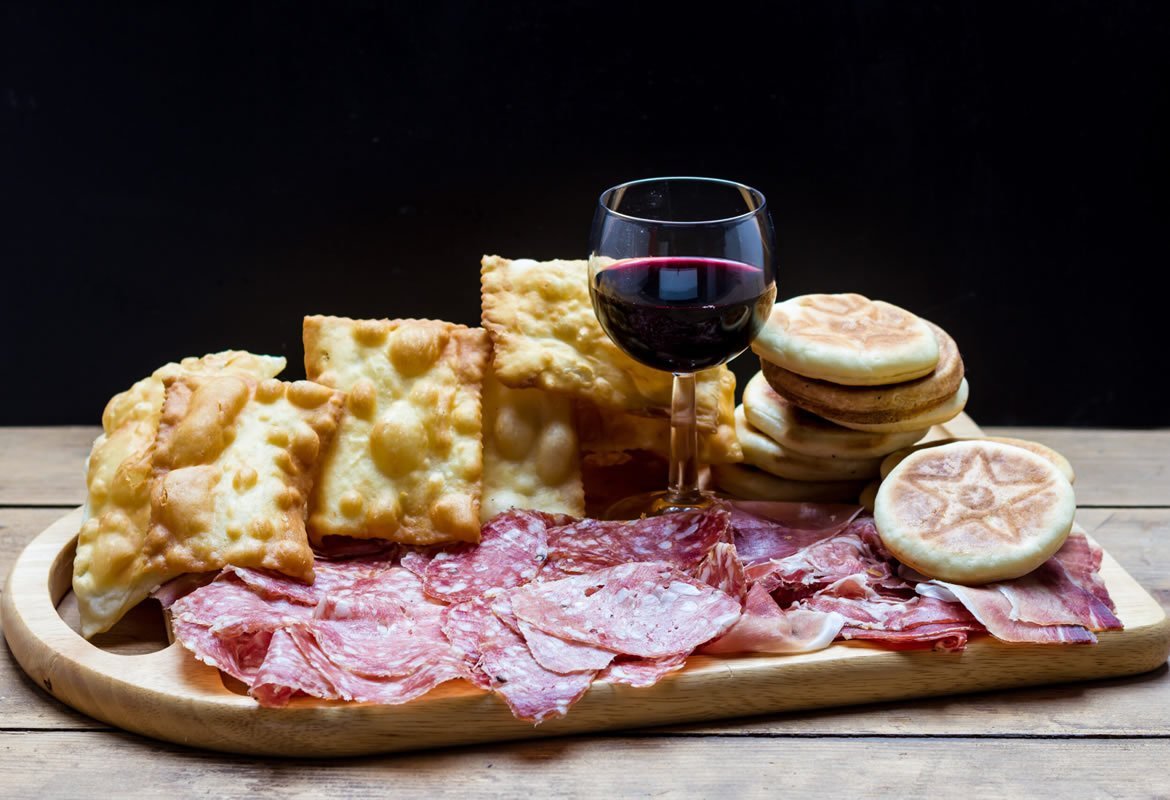
Fried dough specialties have been cherished in Bologna and the surrounding Emilia-Romagna region for centuries. Crescentine and Gnocco Fritto showcase the culinary ingenuity of Bolognese chefs, transforming basic ingredients into delightful indulgences.
Crescentine are exquisite pillows of dough, typically crafted from a mixture of flour, lard, and water, deep-fried to a golden-brown perfection. These delightful bites are often served alongside an array of cured meats, cheeses, and savory accompaniments.
Another delectable fried dough creation is Tigella. These small, round, and thick bread discs, originating from the Emilia-Romagna region, including Bologna, are made from a dough of flour, water, and yeast. Cooked on a special burner called a “tigelliera”. Tigelle are often enjoyed with diverse fillings like cured meats, cheeses, and spreads, adding versatility and scrumptiousness to the local cuisine. The name “tigelle” is derived from the cast iron plates historically used for cooking them.
Where to try Crescentine and Tigelle in Bologna:
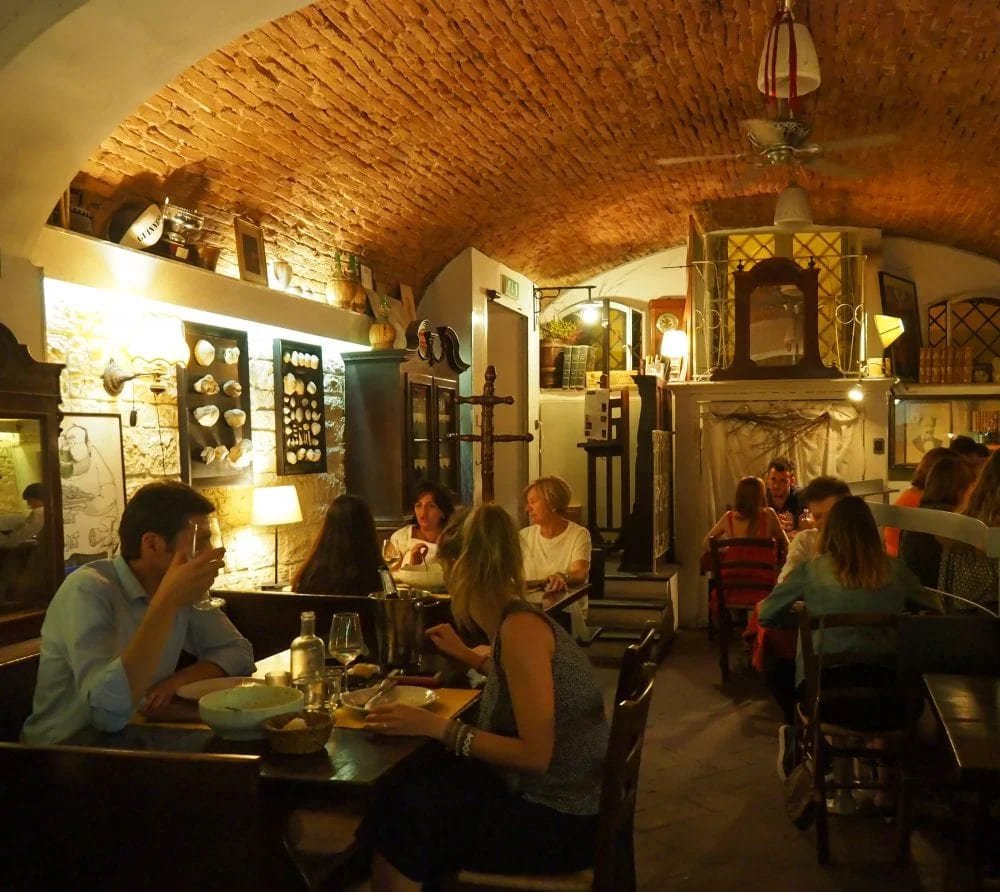
Bologna has a cherished tradition of aperitifs, where early evenings begin with light snacks and wine before a late dinner. Enjoying Crescentine or Tigelle with local cured meats and cheeses, paired with Emilia Romagna wine, creates a delightful combination for an aperitif.
For an exceptional aperitif experience in Bologna, Osteria dei Grifoni stands out. This traditional osteria, located in a wine cellar in the city center, offers a variety of fried dough breads with authentic local fillings. It’s a must-visit for those seeking to savor the signature snacks and wines of the region.
8. Cured Meat and Cheese
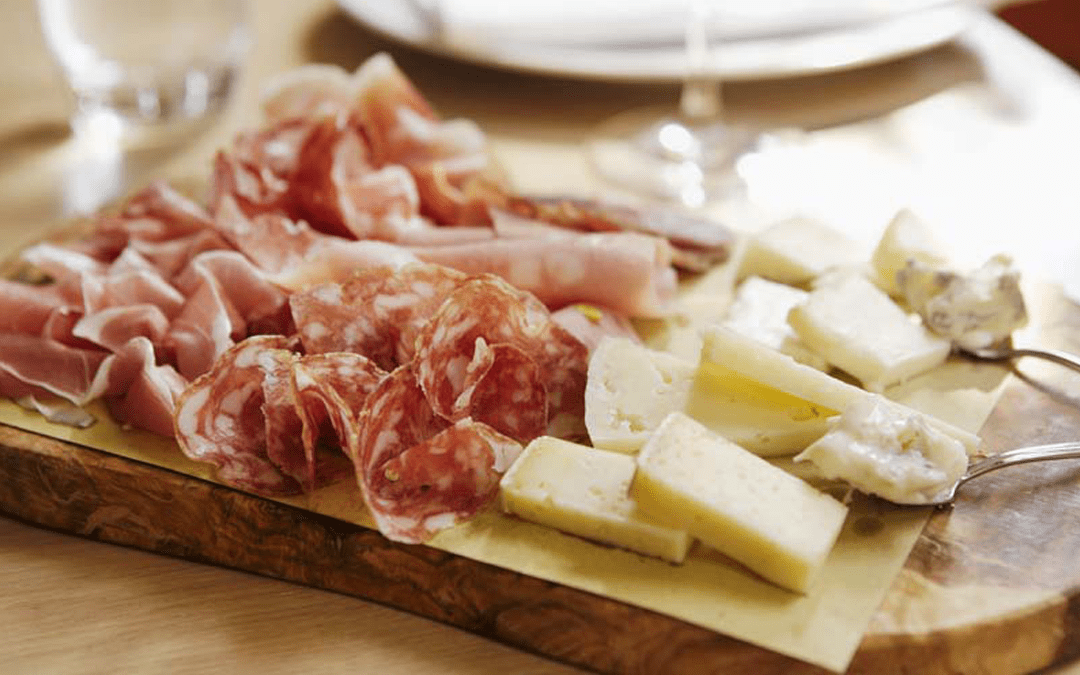
Emilia Romagna stands out for its exceptional cured meats (salumi) and cheeses (formaggi). Prosciutto di Parma, Culatello di Zibello, Mortadella, and Parmigiano-Reggiano are just a few examples of the outstanding products originating from the region.
Mortadella, a flavorful cured pork sausage, has been a culinary tradition in Bologna since the Middle Ages. The term “mortadella” finds its origins in the Latin word “myrtum”, which refers to the myrtle berries historically used in the sausage.
Squacquerone is another must-try Bolognese specialty. This soft and creamy cheese, typically made from cow’s milk, boasts a delicate, spreadable texture with a slightly tangy and milky flavor. Frequently enjoyed on bread or as a filling in various dishes, Squacquerone adds a rich and creamy element to Bolognese cuisine.
Where to try Local Cured Meat and Cheese in Bologna:
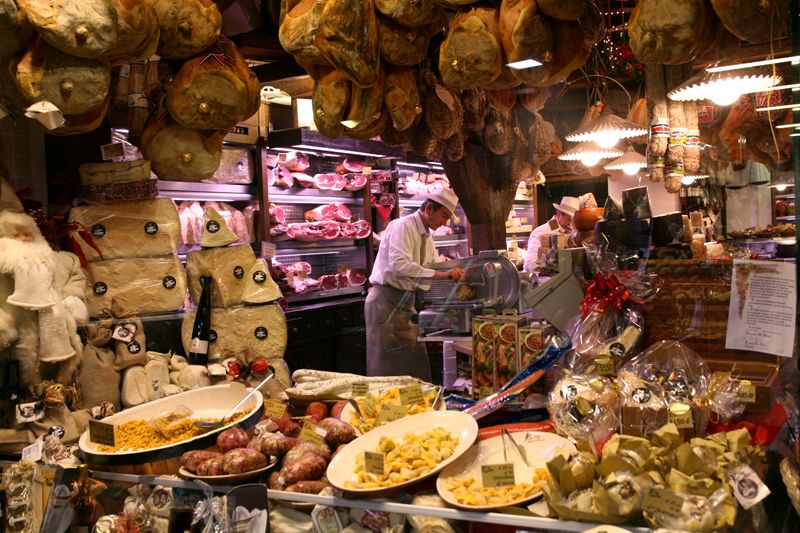
9. Sweets and Desserts of Bologna

Bologna offers a delightful array of sweets and desserts. Here are some must-try treats:
- Torta di Riso is a classic Bolognese dessert, a rice cake made with eggs, sugar, and lemon zest. It has a dense and creamy texture and is often flavored with vanilla or cinnamon.
- Tiramisù. While Tiramisù is not originally from Bologna, it has become a popular dessert in the region. This delightful treat consists of layers of coffee-soaked ladyfingers and mascarpone cream, topped with cocoa powder. It’s a heavenly way to end your meal.
- Amaretti are almond-flavored cookies, often served as a sweet accompaniment to coffee or dessert wine. They have a crisp exterior and a chewy, marzipan-like interior, making them a delightful treat for almond lovers.
- Zuppa Inglese is an Italian trifle-like dessert, consisting of layers of sponge cake or ladyfingers, custard, and chocolate. The name translates to “English soup,” and its origins are thought to be inspired by English desserts.
- Gelato is an absolute must-try in Italy, and Bologna is no exception.
Café Pastry Gamberini is a delightful pastry shop located on Via Ugo Bassi, offering a wide array of local and nationwide desserts.
Where to try one of the best Gelato in Bologna:
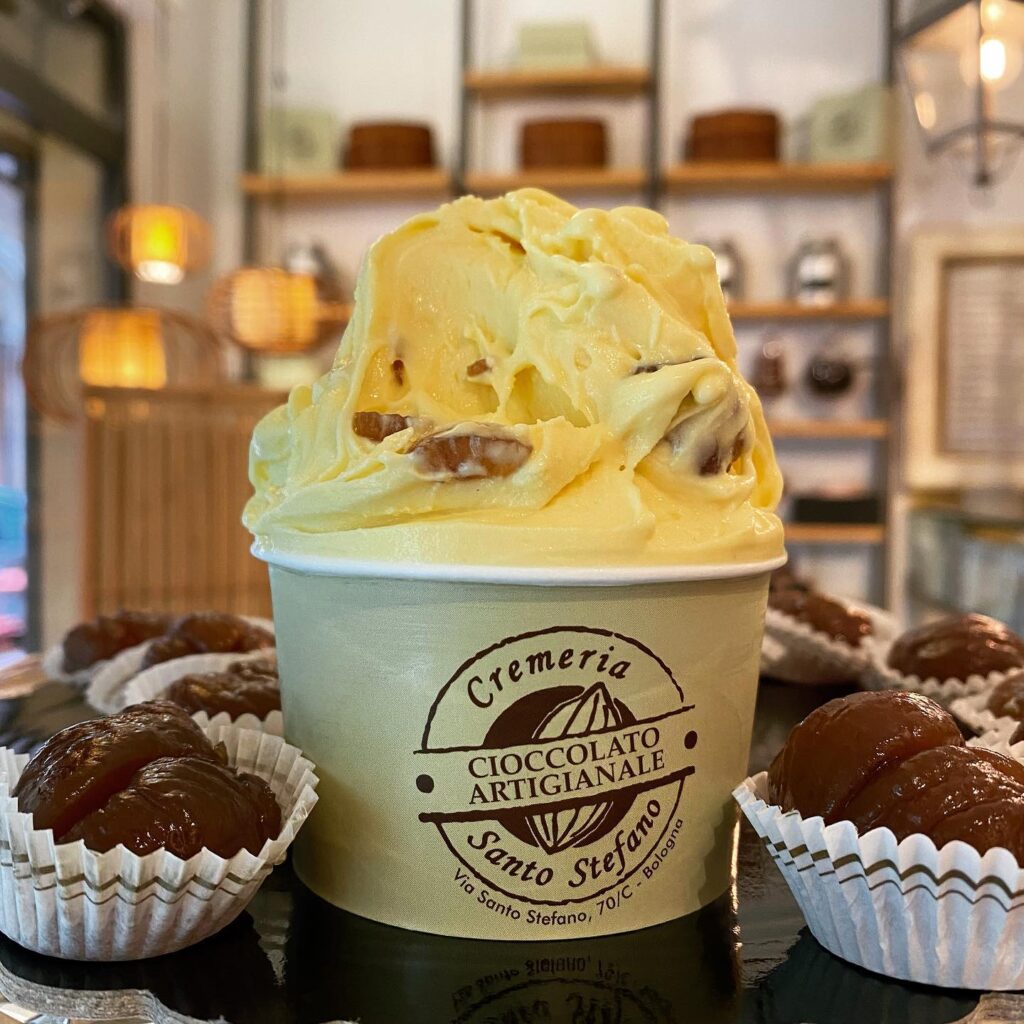
10. Wine Culture of Bologna
I can’t conclude this article without mentioning the remarkable wines of the Emilia-Romagna region, including noteworthy varieties like Lambrusco, Sangiovese, and Albana. These local wines beautifully complement the traditional Bolognese cuisine. While I won’t delve into the details of these wines here, I highly recommend a visit to a local osteria to experience them.
Throughout our articles, we’ve highlighted several osterias as excellent dining options. Traditionally, an “osteria” is an Italian establishment where only wine is served, and guests are expected to bring their own food. It’s a less formal setting than a restaurant, emphasizing a warm and welcoming atmosphere for guests.
In the heart of Bologna, there’s a unique place embodying this tradition – Osteria Del Sole.
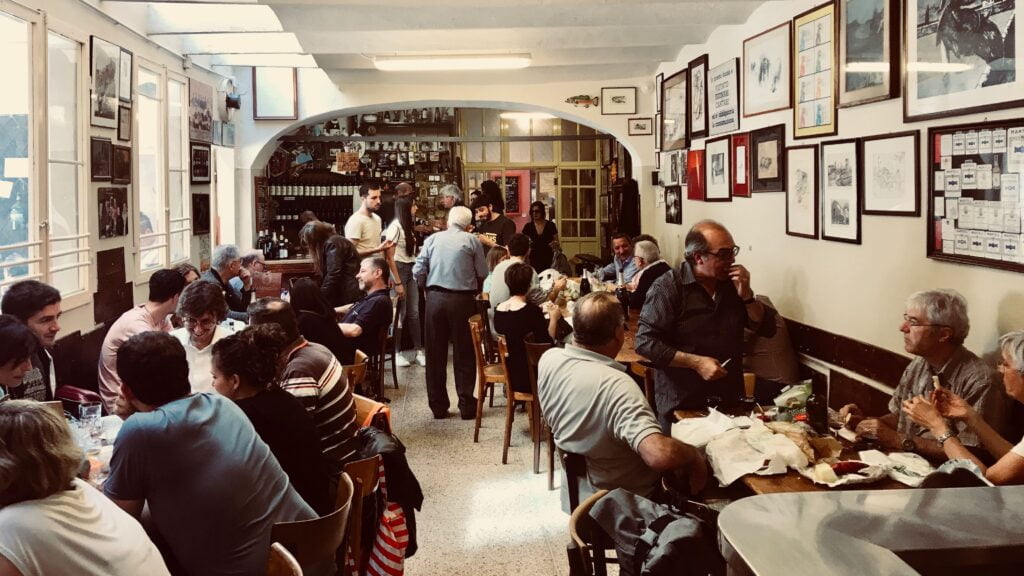
Summary
Want to explore more about Bologna?
Check our travel guide to this Medieval City!
Bologna Bologna might not be the first city that comes to mind when you consider a visit to Italy, but let me tell you, once you’ve experienced Bologna, the only regret you’ll have is not having spent more time
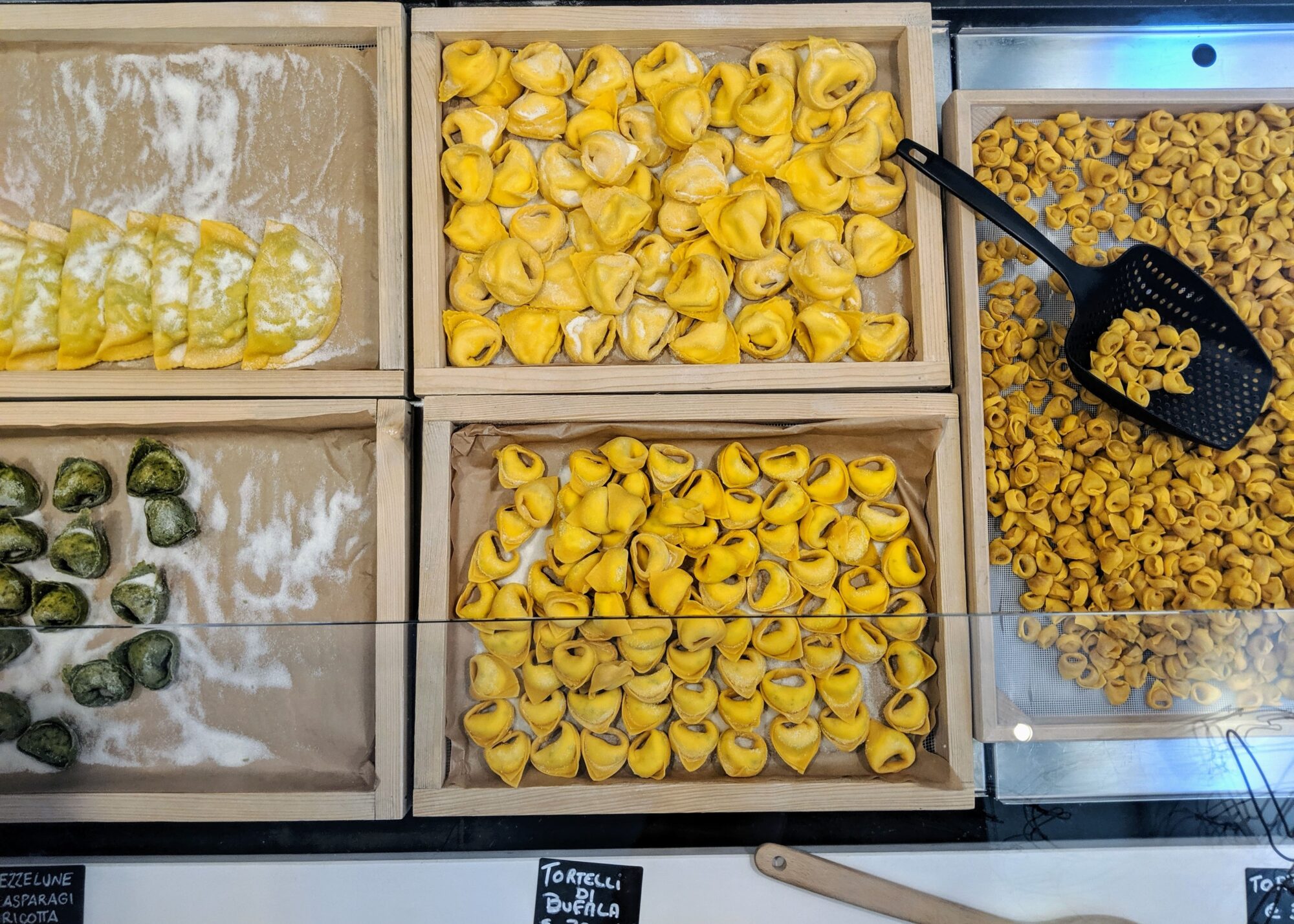
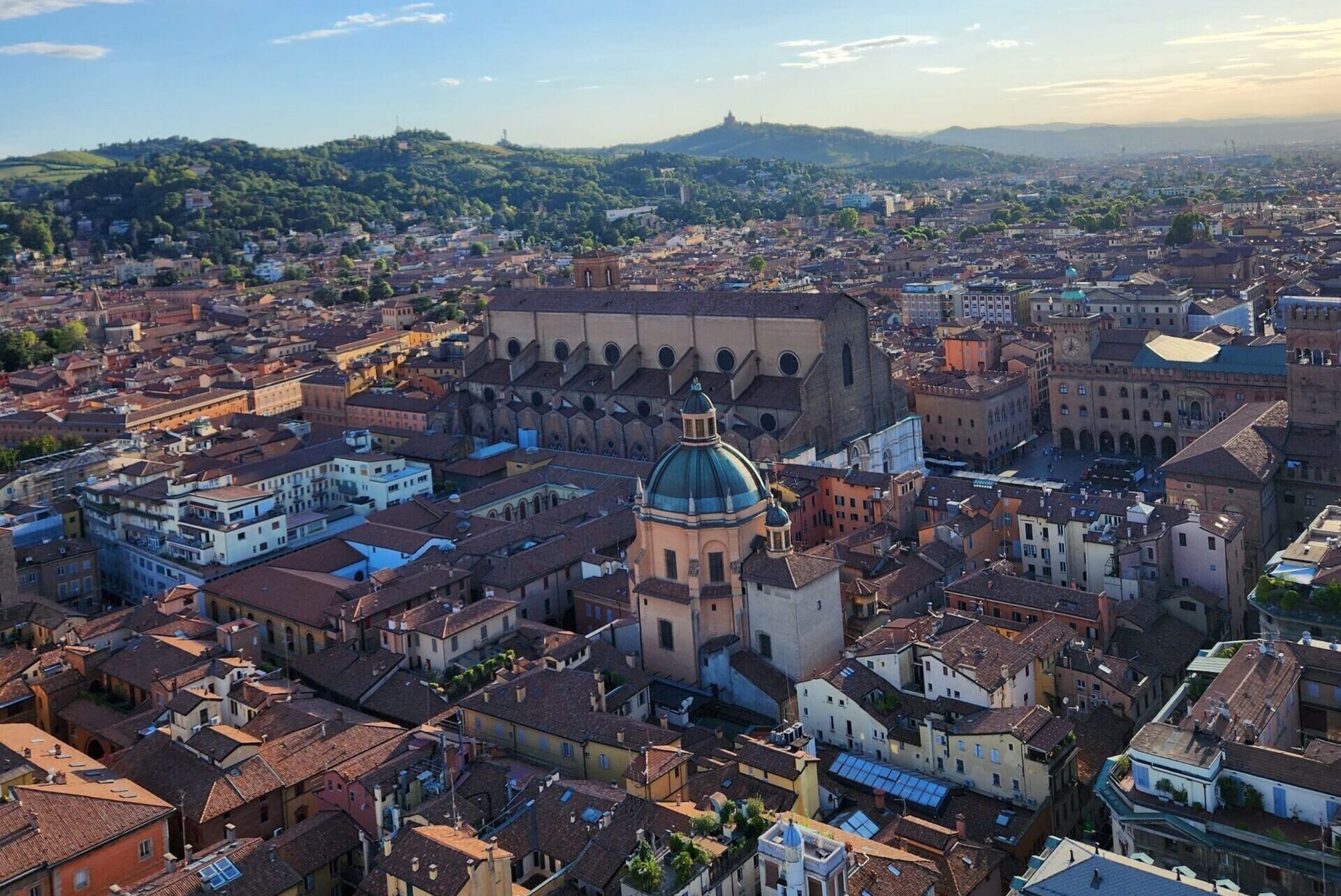
Да, лазанья чудесная. Пальчики оближешь. И мороженое просто обьедение.